
The Legend of Zelda is an action-adventure game franchise created by the Japanese game designers Shigeru Miyamoto and Takashi Tezuka. It is primarily developed and published by Nintendo, although some portable installments and re-releases have been outsourced to Flagship, Vanpool, and Grezzo. The gameplay incorporates action-adventure and elements of action RPG games.

The Legend of Zelda: A Link to the Past is an action-adventure game developed and published by Nintendo for the Super Nintendo Entertainment System. It is the third game in The Legend of Zelda series and was released in 1991 in Japan and 1992 in North America and Europe.

Castlevania, known in Japan as Akumajō Dracula, is a gothic horror action-adventure video game series and media franchise about Dracula, created and developed by Konami. It has been released on various platforms, from early systems to modern consoles, as well as handheld devices such as mobile phones. The franchise has expanded into several spin-off video games and other media, including comic books and an animated television series.

Sonic the Hedgehog is a 1991 side-scrolling platform game. It is a companion to the 16-bit Sega Genesis game Sonic the Hedgehog for the 8-bit Master System and Game Gear consoles. Ancient—a studio founded by composer Yuzo Koshiro for the project—developed the game and Sega published it to promote the handheld Game Gear. The 8-bit Sonic is a side-scrolling video game similar in style to the 16-bit game, but reduced in complexity to fit the 8-bit systems.
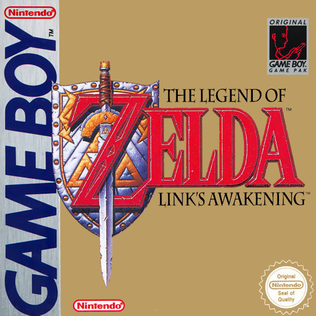
The Legend of Zelda: Link's Awakening is a 1993 action-adventure game developed and published by Nintendo for the Game Boy. It is the first installment in The Legend of Zelda series for a handheld game console. Link's Awakening is one of the few Zelda games not to take place in the land of Hyrule, and it does not feature Princess Zelda or the Triforce relic. Instead, the protagonist Link begins the game stranded on Koholint Island, a place guarded by a whale-like deity called the Wind Fish. Assuming the role of Link, the player fights monsters and solves puzzles while searching for eight musical instruments that will awaken the sleeping Wind Fish and allow him to escape from the island.

Castlevania: Aria of Sorrow is a 2003 action role-playing game developed and published by Konami. It is the third Castlevania game for the Game Boy Advance. Producer Koji Igarashi, who had led the production teams for previous Castlevania games, led Aria of Sorrow's development as well. Michiru Yamane returned to compose the music alongside Takashi Yoshida and Soshiro Hokkai. Director Junichi Murakami was new to the Castlevania series.

Castlevania: Dawn of Sorrow is a 2005 action role-playing game developed and published by Konami. It is part of Konami's Castlevania video game series and the first Castlevania game released on the Nintendo DS. The game is the sequel to Castlevania: Aria of Sorrow and incorporates many elements from its predecessor. Dawn of Sorrow was commercially successful. It sold more than 15,000 units in its first week in Japan and 164,000 units in the United States during the three months after its initial release.

Yuzo Koshiro is a Japanese composer and sound programmer. He is often regarded as one of the most influential innovators in chiptune and video game music, producing music in a number of genres including rock, jazz, symphonic, and various electronic genres such as house, electro, techno, trance, and hip hop.

Castlevania Legends is the third Castlevania title released for the original Game Boy. It was released in Japan on November 27, 1997 and in Europe and North America on March 11, 1998. The game received its first official re-release on the Nintendo Switch Online service on October 31, 2023.
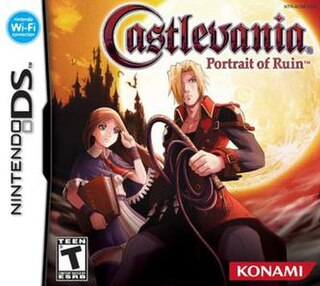
Castlevania: Portrait of Ruin is a 2006 action role-playing game developed and published by Konami. The game was released on November 16, 2006 in Japan, and in North America on December 5, 2006 for the Nintendo DS handheld game console. Portrait of Ruin is the first Castlevania to feature a cooperative multiplayer gameplay mode and the first handheld Castlevania to have English voice-overs, outside of its original Japanese release.

The Legend of Zelda: Phantom Hourglass is a 2007 action-adventure game developed and published by Nintendo for the Nintendo DS handheld game console. It is the fourteenth installment in The Legend of Zelda series and the direct sequel to the 2002 GameCube title The Wind Waker. Phantom Hourglass was released worldwide in 2007, with the exception of South Korea in April 2008. The game was re-released for the Wii U via the Virtual Console service in the PAL region in November 2015, in North America in May 2016, and in Japan in August.

Castlevania, known in Japan as Akumajō Dracula, is a platform game developed and published by Konami for the Family Computer Disk System video game console in Japan in September 1986. It was ported to cartridge format and released in North America for the Nintendo Entertainment System (NES) in May 1987 and in Europe in 1988. It was also re-issued for the Family Computer in cartridge format in 1993. It is the first game in Konami's Castlevania video game series.
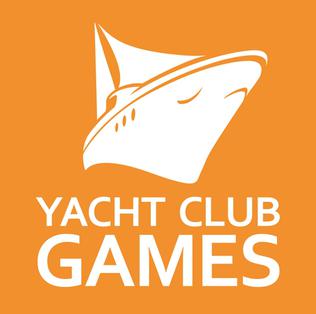
Yacht Club Games, LLC is an American independent video game development studio and publisher founded in 2011 by former WayForward Technologies director Sean Velasco. The company announced their first title, Shovel Knight, on March 14, 2013, and released it on June 26, 2014, after a successful Kickstarter campaign. In 2016, the company announced that it would start publishing games from other companies, and that their first published game would be Azure Striker Gunvolt: Striker Pack, a compilation containing Azure Striker Gunvolt and Azure Striker Gunvolt 2, which was released later that year. Their second published title was Cyber Shadow, a game developed by Mechanical Head Studios, which was released in 2021. In February 2022, the company announced their second original title, Mina the Hollower.
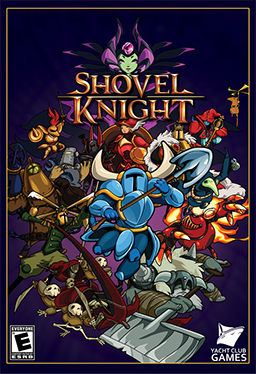
Shovel Knight is a platform video game developed and published by Yacht Club Games. Development was crowdfunded and the game was released for Nintendo 3DS, Wii U, and Windows in June 2014. It was ported to OS X and Linux in September 2014, PlayStation 3, PlayStation 4, PlayStation Vita, and Xbox One in April 2015, Amazon Fire TV in September 2015, and Nintendo Switch in March 2017. Shovel Knight is inspired by gameplay and graphics of platformer games developed for the Nintendo Entertainment System.
Narcissa Wright is an American speedrunner and co-founder of the website SpeedRunsLive, which allows speedrunners to race with one another in real time. She previously held the records for the fastest completion of The Legend of Zelda: The Wind Waker on the GameCube, The Legend of Zelda: Ocarina of Time on the iQue Player, Paper Mario on the Wii using Virtual Console, and Castlevania 64 on the Nintendo 64.

Metroidvania is a sub-genre of action-adventure games and/or platformers focused on guided non-linearity and utility-gated exploration and progression. The term is a portmanteau of the names of the video game series Metroid and Castlevania, based on the template from Metroid (1986), Castlevania II (1987), Super Metroid (1994), and Castlevania: Symphony of the Night (1997).
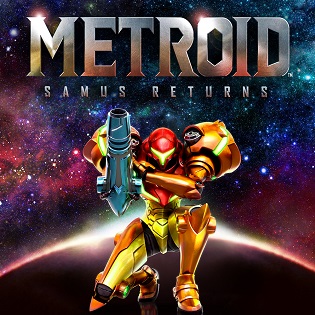
Metroid: Samus Returns is a 2017 action-adventure game developed by MercurySteam and Nintendo EPD and published by Nintendo for the Nintendo 3DS handheld game console. It is a remake of the 1991 Game Boy game Metroid II: Return of Samus. Players control series protagonist Samus Aran, a bounty hunter who is contracted by the Galactic Federation to exterminate the parasitic Metroid species on their home planet of SR388. While the story and structure parallel the original game, Samus Returns features redone graphics, updated controls and user interface, and new gameplay mechanics not seen in previous 2D Metroid titles, such as a melee counterattack and the ability to aim freely at any angle.

Cyber Shadow is a side-scrolling action-platform game developed by Finnish indie studio Mechanical Head Studios and published by Yacht Club Games. Using an 8-bit aesthetic, the game follows a cybernetic ninja named Shadow who sets out to rescue his clan in a world overrun by machines.

Shovel Knight Dig is a 2022 roguelite platform game developed by Nitrome and Yacht Club Games. It is an entry in the Shovel Knight franchise and a prequel to the original game. The player controls the protagonist Shovel Knight as he fights enemies and collects treasure while descending down a hole to recover his stolen treasure bag. When the player dies, they lose all obtained upgrades, returning to the surface with a fraction of the treasure they collected while playing. At the surface, they can spend treasure on a variety of items that make gameplay easier.
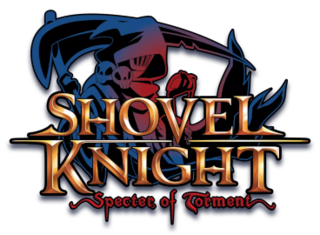
Shovel Knight: Specter of Torment is a 2017 downloadable content (DLC) expansion for the 2014 platform game Shovel Knight, developed and published by Yacht Club Games. The player takes control of Specter Knight, an undead warrior tasked with recruiting a group of knights for the Enchantress, the main villain of Shovel Knight. Specter Knight can run up walls and jump off them, and slash through enemies and objects with his scythe to move through the air. Gameplay is similar to Shovel Knight, but features new levels and redesigned boss fights.




















